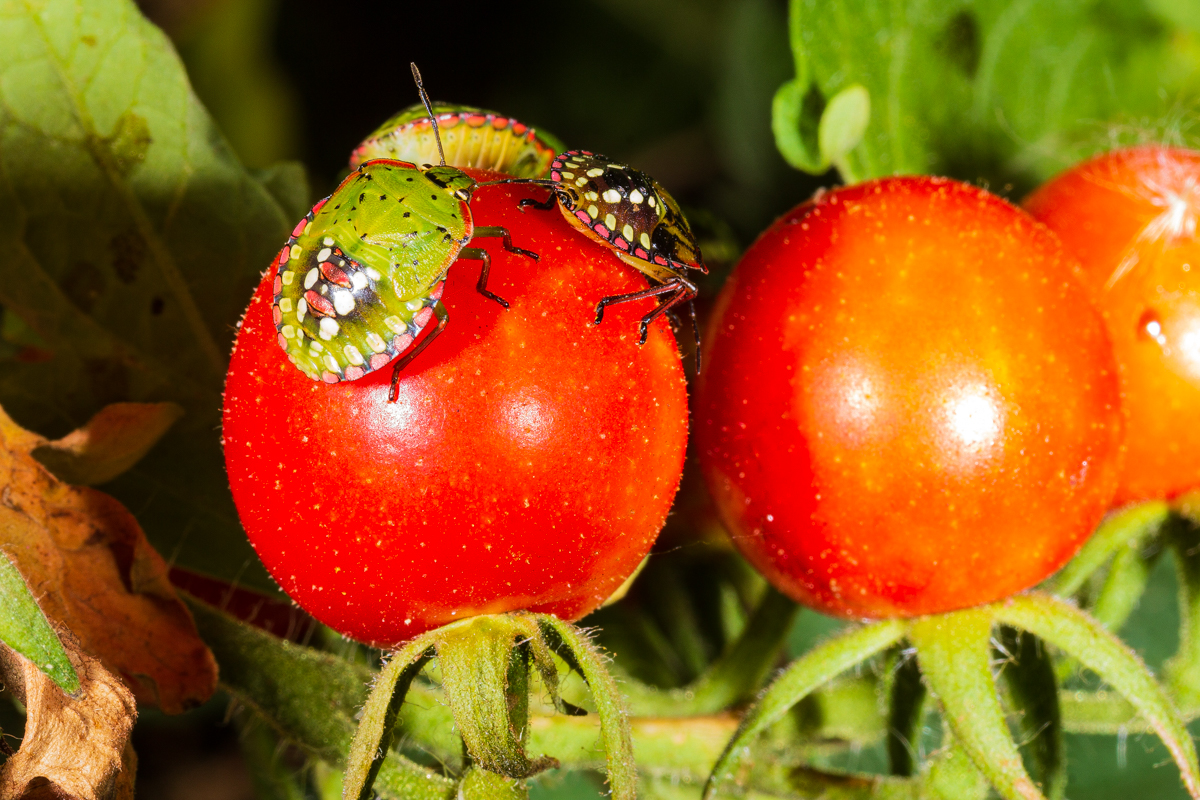Bugged by Bugs? Plant More Plants
Tired of bugs eating their way through your garden? Learn how you can combat the effects of pest bug damage through plant diversity.
Humans aren’t the only ones who find home-garden vegetables to be tasty and nutritious. Dozens of bug species from rust-fly larvae in the carrots to earworms in the corn are common pests that try to harvest our crops before we do.
Start by choosing varieties that are naturally resistant to and/or tolerant of bugs.
Then instead of planting each crop in blocks that make it easy for pests to find and feed on, intermingle crops in smaller groupings. Cabbage worms might find one cluster of broccoli plants, but they might not find another hidden among the onions.
Also, time your planting to avoid the bug reproduction cycle or plant crops successively a few weeks apart rather than all at once so that if bugs get one planting, they might no longer be active for the next one.
Some bug damage is temporary, cosmetic, or partial. Monitor plants regularly to separate real brewing trouble from the minor stuff that can be tolerated, cut out, or peeled away.
Floating row covers, which are water-porous, light-weight, polyester blankets that can be draped over plants, are one of the best defenses for keeping flying pests from eating leaves or laying eggs on plants.
Cardboard collars made out of toilet paper rolls work well to keep cutworms from chewing the base of young plants, and foil wrapped around the base of squash plants discourages squash vine borers from laying eggs in the plant stems.
Non-toxic repellents are available in garden centers that naturally repel bugs with such ingredients as garlic or hot-pepper oil. Some are spray-on liquids, others are granular that can be scattered around the base of plants.
Interplanting plants also helps because the scent of an undesirable plant, such as onions or oregano, can disguise the scent of a desirable plant nearby.
On the other hand, some scents or sights draw bugs in, which is the strategy behind bug traps that lure bugs (usually with reproduction-related bug hormones) and then capture them.
A simple DIY trap can be made using yellow sticky boards or cards coated with Tangle-Trap or petroleum jelly. Many bugs are attracted by the color yellow (the color of many vegetable flowers), and when they land to investigate, the sticky goo keeps them from leaving.
Commercial traps are available at garden centers and in garden catalogs.
Hand-pick and squish larger bugs, such as potato beetles, hornworms, and slugs. You can also drop them in a can of hot, soapy water.
Look for eggs of pest bugs on leaf undersides and squish them before they hatch.
Vacuum cleaners come in handy for sucking colonies of small bugs such as aphids and whiteflies off of plant leaves.
A stiff spray of water is surprisingly effective at killing and/or knocking soft-bodied bugs like aphids and spider mites off of plants.

Bugs on Tomatoes | Gutaper / iStock / via Getty Images
These are your best allies at keeping pest bugs under check and are a reason why it’s not a good long-term strategy to first reach for wide-spectrum insecticides. Insecticides can kill beneficial insects along with the pests, leaving the garden without that natural layer of protection when the pests mount a comeback.
Do homework to recognize at least some of the most important and most common beneficial insects, and avoid killing them.
This control option uses nature to fight nature. Pest-eaters such as parasitic nematodes, ladybugs, and other beneficial bugs can be bought and released in the garden.
Naturally-derived sprays also are available that deliver bacterial and fungal insect diseases, such as Bacillus thuringiensis, Spinosad, and Beauveria.
If all of the above fail and you’re facing a pest that’s causing unacceptable damage, look for a bug-killer that targets the identified pest while doing the least amount of collateral damage.
Start with “soft” pesticides, such as insecticidal soap, horticultural oil, or neem oil.
If those don’t help, chemical insecticides are available as a last resort. Read labels to make sure the insecticide you’re considering is effective against the pest you have, that it’s approved for use on edibles, and that you’re using the right amount at the right time.